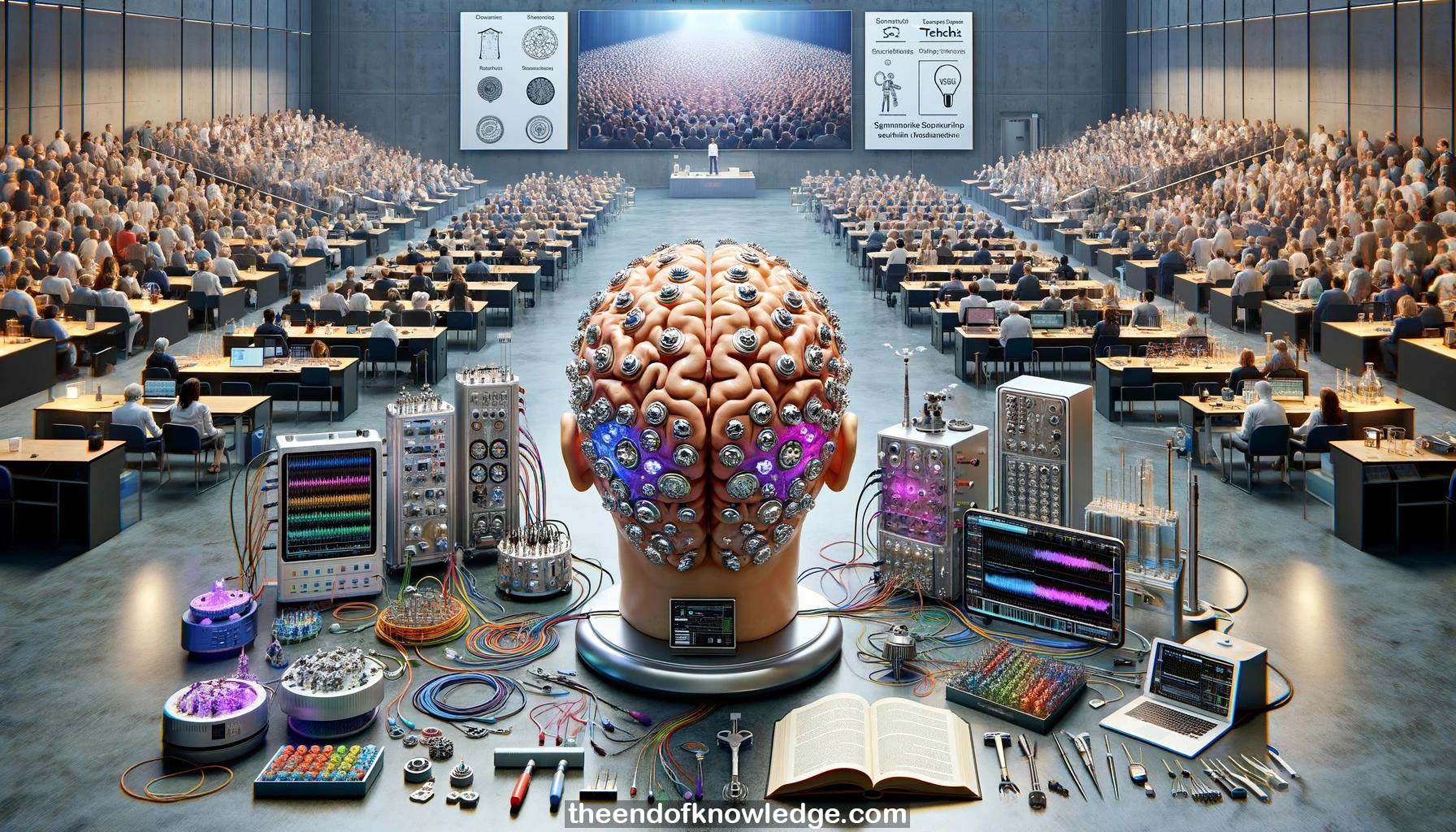 >
>
Concept Graph & Resume using Claude 3 Opus | Chat GPT4 | Llama 3:
Resume:
1.-Kai Miller discusses rhythmic entrainment and cortical dynamics using electrocorticography (ECoG) and stereo EEG recordings from the brain surface.
2.-The workshop has over 71,000 attendees, with the peak lecture having over 17,000 people watching simultaneously, bigger than the Society for Neuroscience meeting.
3.-Kai is funded by NIH and foundation awards, interacts with companies but isn't paid by them, and uses G-Tech amplifiers without compensation.
4.-ECoG grids have platinum iridium pads averaging over ~500,000 neurons, spaced 1 cm apart, covering 5% of the cortical surface.
5.-Comparing power spectra at rest vs. during hand movement shows decreases in low frequencies and broadband increases in high frequencies.
6.-High frequency increases are spatially focal and specific to cortical function modality, while low frequency decreases are more widespread oscillations.
7.-Simple tasks immediately show hand sensorimotor area activation on ECoG. Patients achieved 2D cursor control via motor imagery within 10 minutes.
8.-Broadband spectral changes reflect differences in charge density between superficial and deep cortical layers, indicating aggregate neural population activity.
9.-Principal component analysis extracts a flat component across all frequencies, indicating broadband changes rather than oscillatory activity.
10.-The "high gamma" and "broadband" phrases refer to these broadband power changes seen across all frequencies, not rhythmic oscillations.
11.-Broadband power increases and low frequency oscillatory decreases occur with motor, speech, visual and auditory tasks. Broadband correlates with BOLD fMRI.
12.-At low frequencies, oscillations mask broadband changes. At high frequencies, amplifier noise limits detection. There are no "gamma oscillations."
13.-Spatially widespread low frequency (beta, 12-20 Hz) oscillations in motor cortex seem to have a suppressive role when not actively moving.
14.-Broadband power is tightly coupled to the phase of low frequency oscillations at rest. This entrainment decreases during movement.
15.-The hypothesis is that weak but widespread thalamic input synchronizes and suppresses inactive cortical areas - "suppression through synchronization."
16.-In Parkinson's disease, this suppressive synchronization from the subthalamic nucleus is abnormally strong. Deep brain stimulation reduces it, alleviating symptoms.
17.-Closed-loop deep brain stimulation is being developed to sense abnormal entrainment and stimulate to reduce it, as a Parkinson's therapy.
18.-ECoG is transitioning to stereo EEG - depth electrodes that record from the full brain volume, albeit more sparsely than ECoG.
19.-Stereo EEG allows research into deep structures and circuitry between brain areas. Tissue heterogeneity affects signal amplitudes between regions.
20.-Stereo EEG shows similar motor-related broadband power increases and low frequency decreases as ECoG, and can map somatotopic hand/foot/tongue representations.
21.-Speech mapping with stereo EEG identified right-dominant language in a rare patient, correlating with fMRI. It helps map eloquent areas pre-surgically.
22.-An unexpected finding was that in the central sulcus depths, there are non-somatotopic motor association areas, challenging classical views.
23.-This deep motor association area is active for movements of either side of the body, differing from somatotopic regions.
24.-The motor association area activity precedes movement onset, but with a different timing than the somatotopic primary motor activity.
25.-Stereo EEG can be used for brain-computer interfaces. An example showed 1D cursor control via primary motor cortex activity.
26.-With motor imagery, premotor cortex is more engaged than primary motor. Parietal areas activate specifically when feedback is provided.
27.-The lab provides a rich environment for data and seeks new members. Key collaborators include Drs. Brinkmann, Hermes and others.
28.-Multiple datasets are available open-access for others to analyze, including 16 ECoG datasets and a stereo EEG dataset.
29.-Key references are provided to the published work discussed as well as a review explaining the clinical context of epilepsy monitoring with intracranial electrodes.
30.-Important open questions remain about the functional role of entrainment in different states and its changes in movement disorders.
Knowledge Vault built byDavid Vivancos 2024